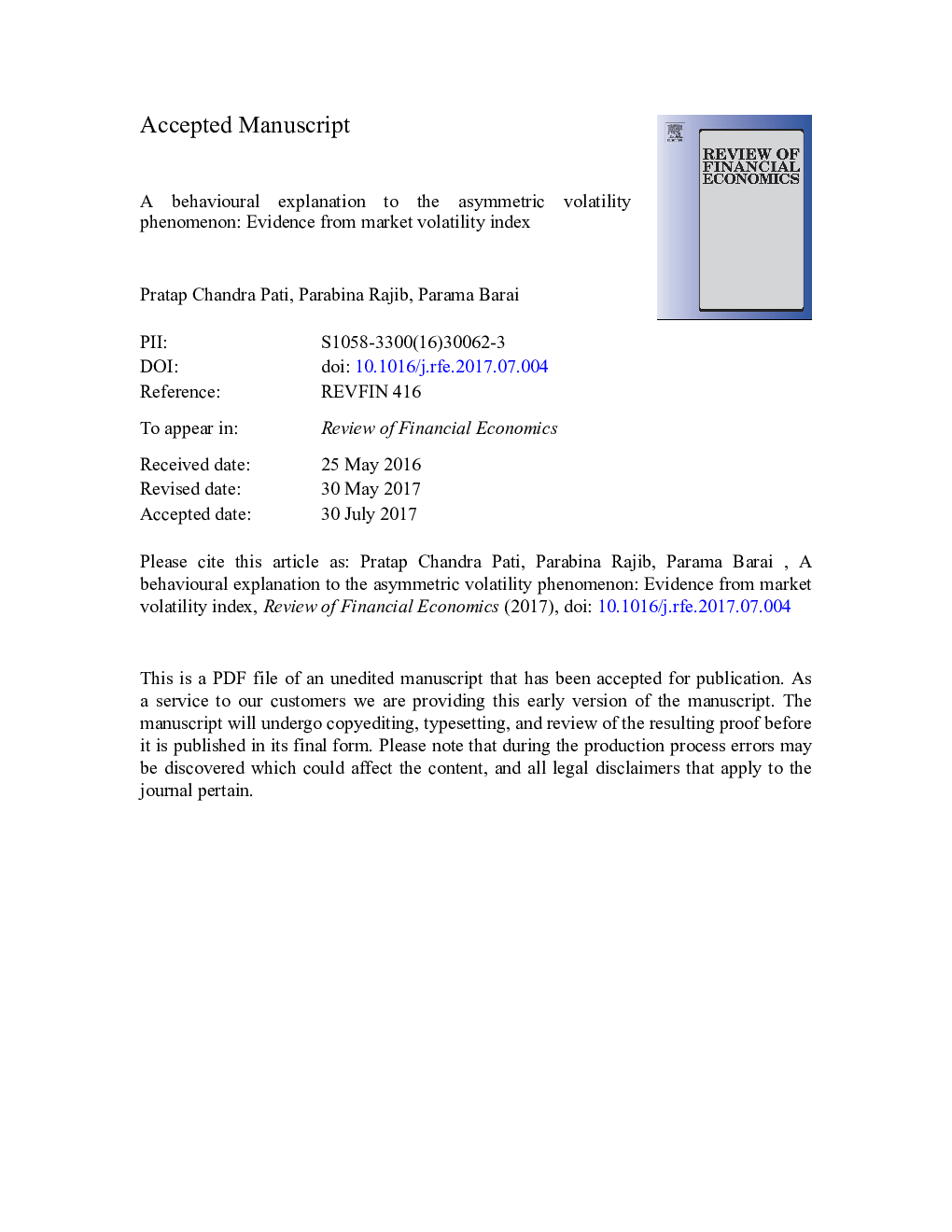| کد مقاله | کد نشریه | سال انتشار | مقاله انگلیسی | نسخه تمام متن |
|---|---|---|---|---|
| 7388510 | 1480880 | 2017 | 61 صفحه PDF | دانلود رایگان |
عنوان انگلیسی مقاله ISI
A behavioural explanation to the asymmetric volatility phenomenon: Evidence from market volatility index
ترجمه فارسی عنوان
توضیح رفتاری برای پدیده نوسانات نامتقارن: شواهد از شاخص نوسان بازار
دانلود مقاله + سفارش ترجمه
دانلود مقاله ISI انگلیسی
رایگان برای ایرانیان
کلمات کلیدی
موضوعات مرتبط
علوم انسانی و اجتماعی
اقتصاد، اقتصادسنجی و امور مالی
اقتصاد و اقتصادسنجی
چکیده انگلیسی
This study examines how the behavioural explanations, in particular loss aversion, can be used to explain the asymmetric volatility phenomenon by investigating the relationship between stock market returns and changes in investor perceptions of risk measured by the volatility index. We study the behaviour of India volatility index vis-Ã -vis Hong Kong, Australia and UK volatility index, and provide a comprehensive comparative analysis. Using Bai-Perron test, we identify structural breaks and volatility regimes in the time series of volatility index, and investigate the volatility index-return relation during high, medium and low volatility periods. Regardless of volatility regimes, we find that volatility index moves in opposite direction in response to stock index returns, and contemporaneous return is the most dominating across the four markets. The negative relation is strongest for UK followed by Australia, Hong Kong and India. Second, volatility index reacts significantly different to positive and negative returns; negative return has higher impact on changes in volatility index than positive return across the markets over full-sample and sub-sample periods. The asymmetric effect is stronger in low volatility regime than in high and medium volatility periods for all the markets except UK. The strength of asymmetric effect is strongest for Hong Kong and weakest for India. Finally, negative returns have exponentially increasing effect and positive returns have exponentially decreasing effect on the changes in volatility index.
ناشر
Database: Elsevier - ScienceDirect (ساینس دایرکت)
Journal: Review of Financial Economics - Volume 35, November 2017, Pages 66-81
Journal: Review of Financial Economics - Volume 35, November 2017, Pages 66-81
نویسندگان
Pratap Chandra Pati, Prabina Rajib, Parama Barai,
